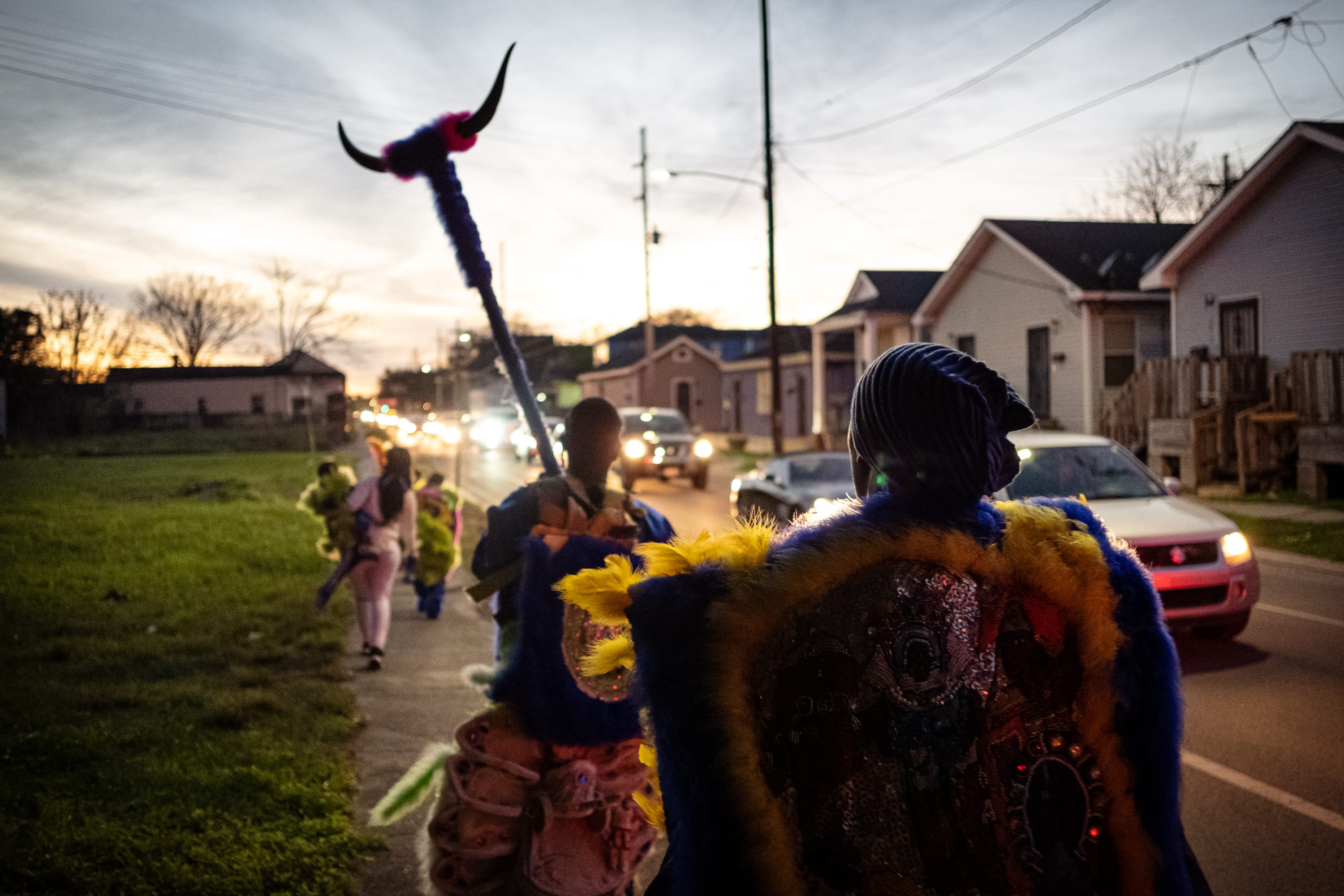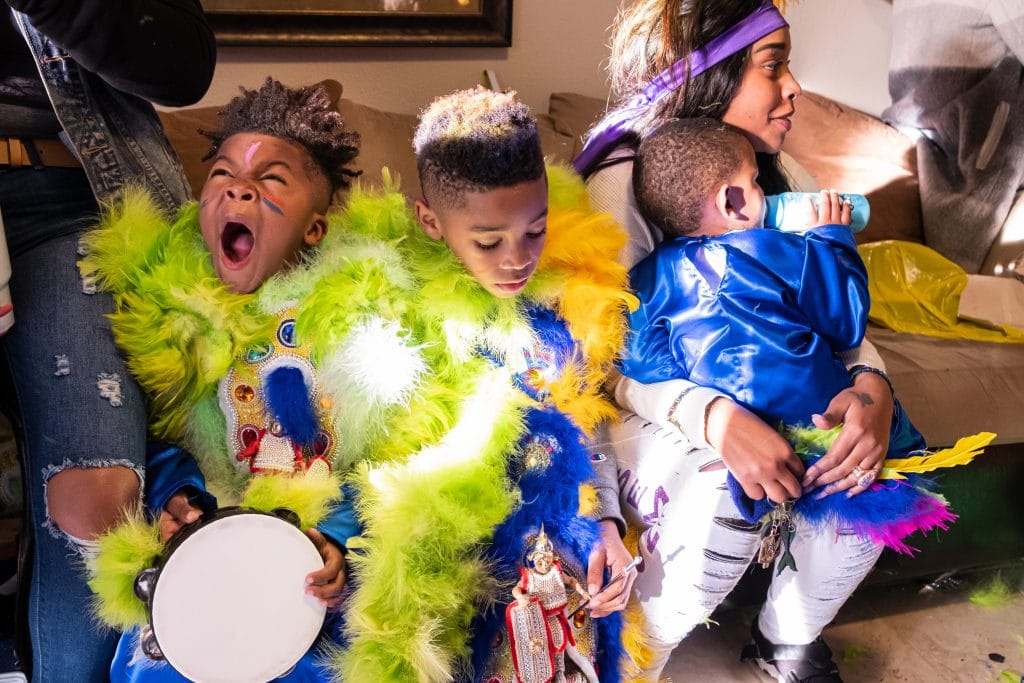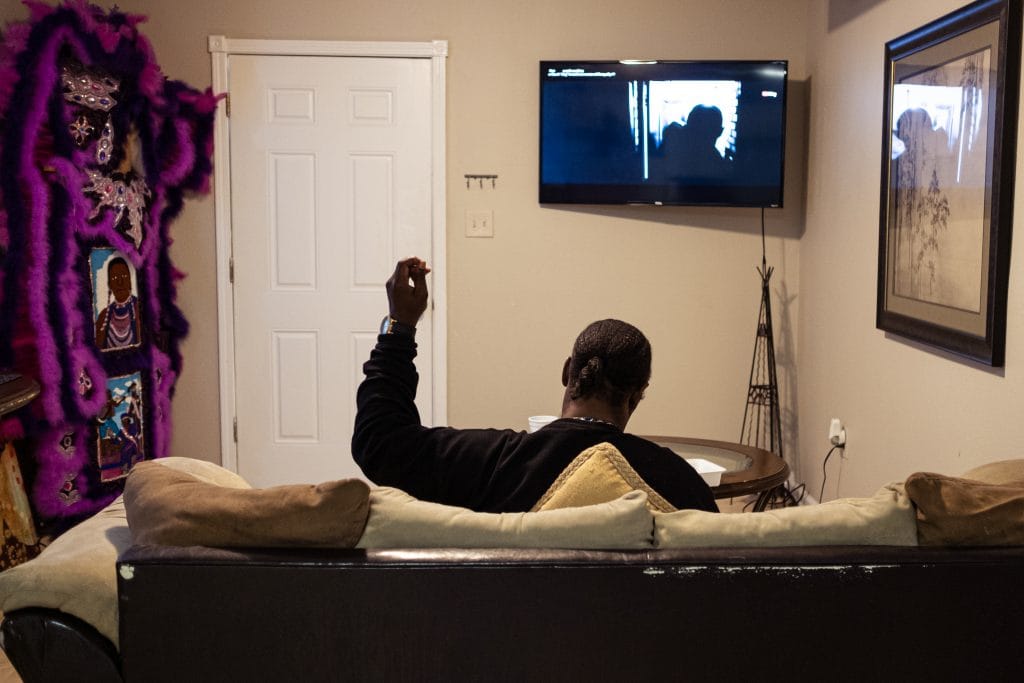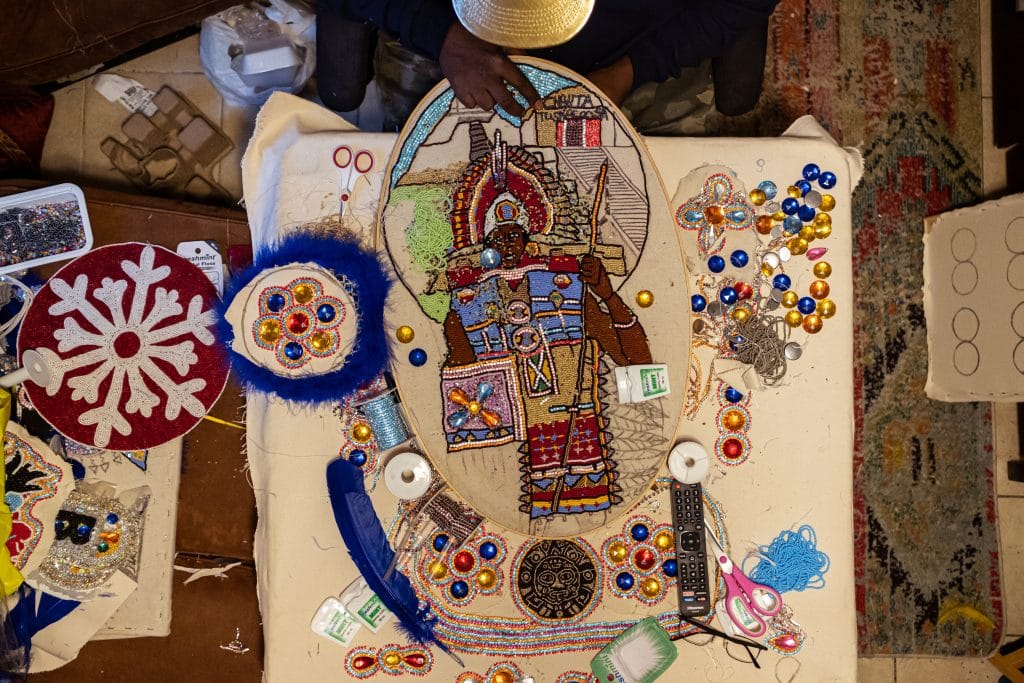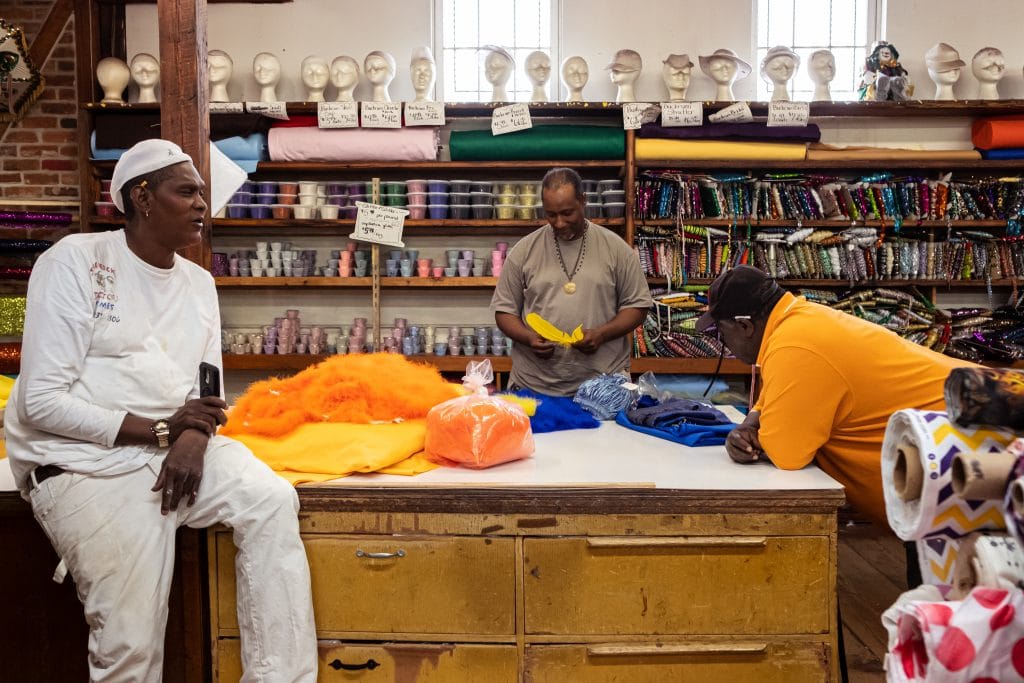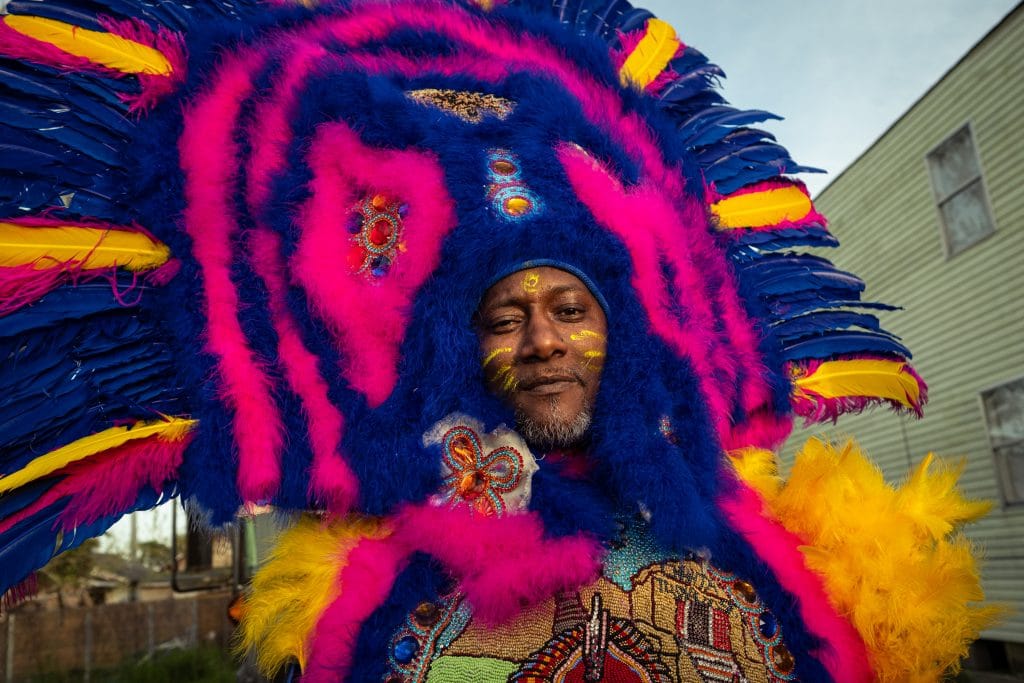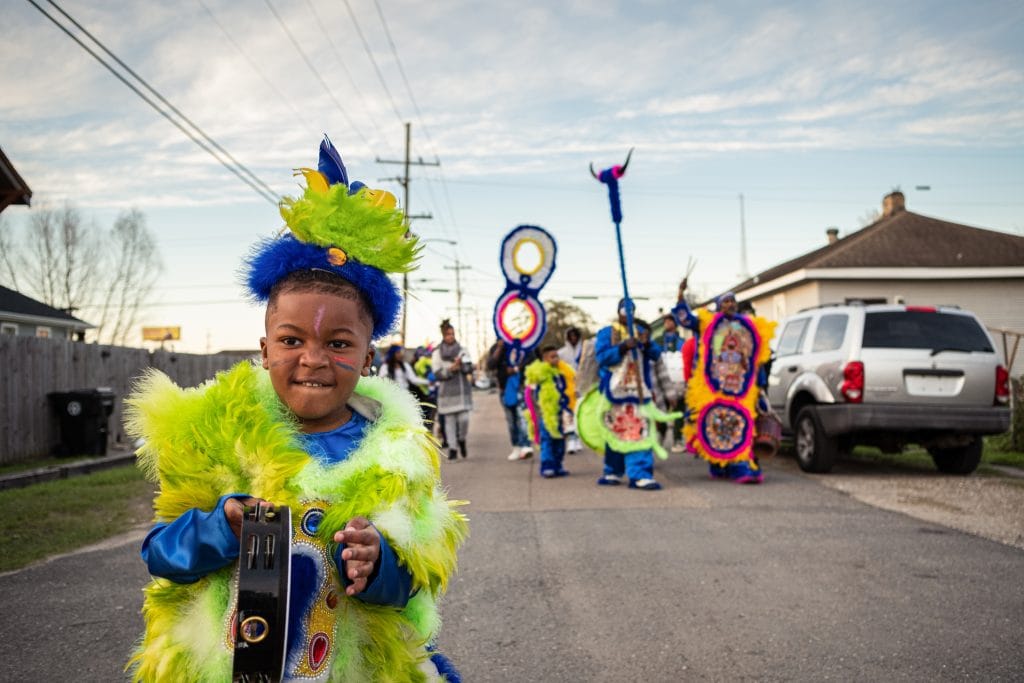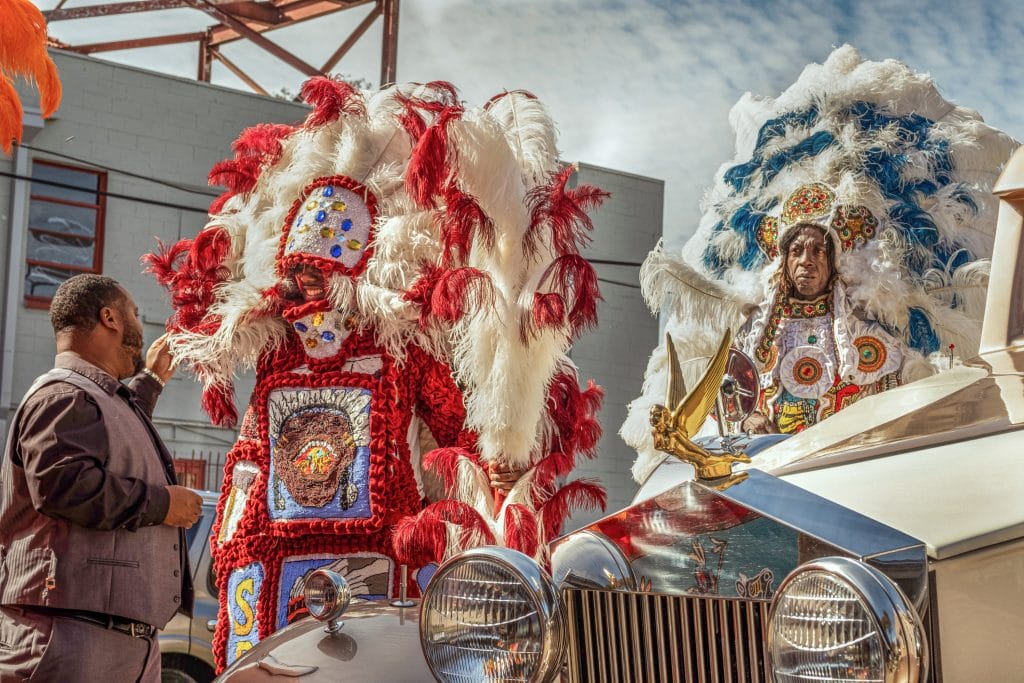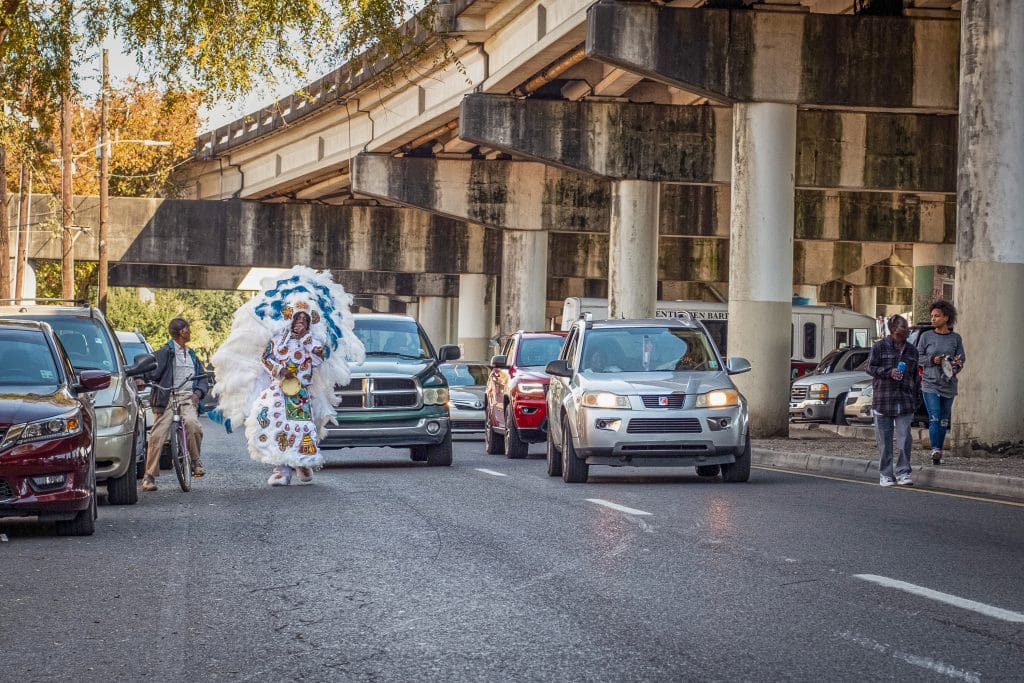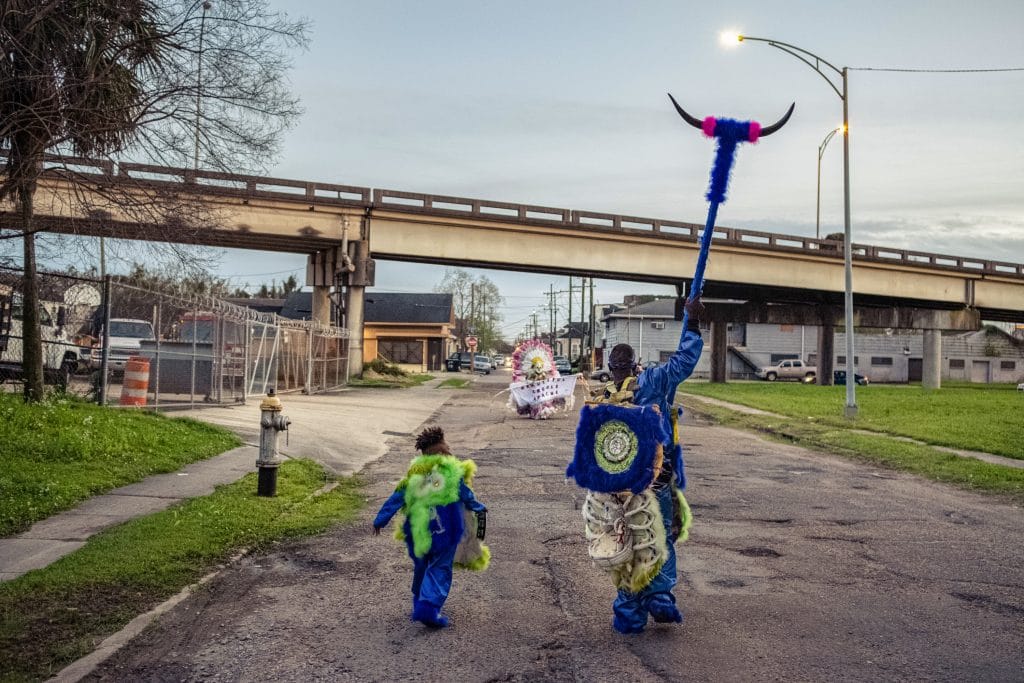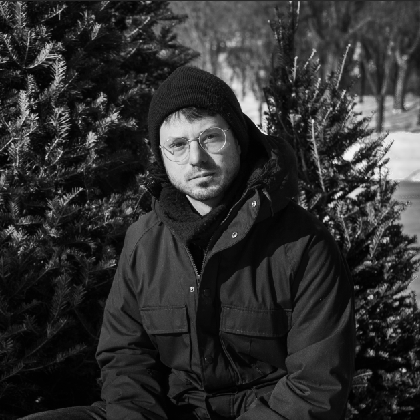Mardi Gras Indians
Between 2018 and 2019, the photographer and musician Philippe Latour took the road for six months. Trained in musicology, he is interested in the place of arts and culture within communities.
He traveled to New Orleans where he discovers the “Mardi Gras Indians”. According to this custom, participants parade through the streets of the city in flamboyant feathered costumes inspired by Native American traditional clothes in the southern United States. He is fascinated by the extravagance of the dances and costumes. From then, he got in touch with a group and began to photograph them while helping them with their fundraising campaign.
Over 200 years old, this tradition celebrated each year by the African-American communities of New Orleans is a tribute to the First Nations. These parades serve to thank and preserve the memory of the Native people who helped blacks during the era of slavery.
Despite its long existence, this celebration is probably the least known of the Mardi Gras festivities
Originally, the groups participating in the parades, the “krewe”, limited their members by invitations. The processions often bore the names of kings or mythological heroes from Rome or ancient Greece. Hierarchies within the krewe parodied that of Western monarchies.
Few people in the black neighborhoods believed they could participate in the parades. Slavery and racism that led to deep segregation and cultural division are still present today. African-American communities therefore gradually developed their own version of the parades. Among other things, by naming their krewes after imaginary Native American tribes.
Thus, the groups that participate in the parades work all year round to make the costumes, which are worth up to $2,000. Hand-made, the costumes are composed of thousands of colorful beads, which are sewn one by one. It is a long and meditative work, a less glamorous aspect that Philippe wanted to document.
It is that in reality the perpetuation of the Indian Mardi Gras rests almost exclusively on the work of a few people. The lack of support from institutions and the resources needed to make the costumes make the task of those who invest themselves throughout the year in order to stroll for a few hours in the streets more dificult.
The fact remains that this cultural practice continues to be transmitted from generation to generation.
More than mere festivities, Mardi Gras Indians parades are symbols of intercultural solidarity, self-assertion in the face of oppression and the right to expression.

